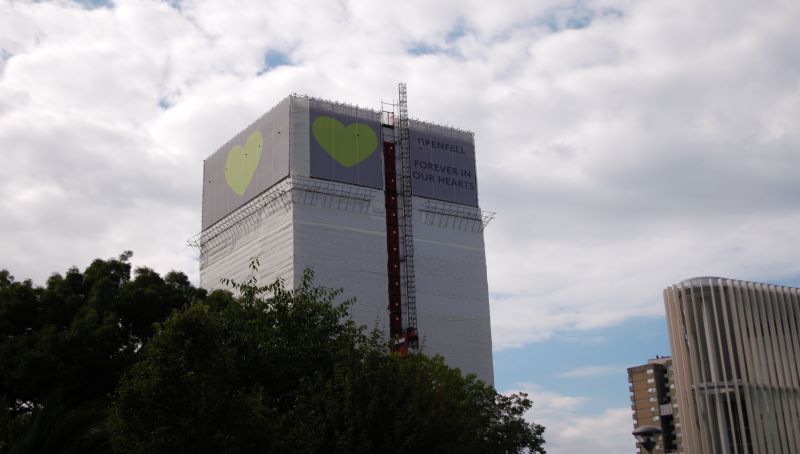
By Danielle Aumord
One of the tragic backstories to the fire at Grenfell on the 14 June 2017 was the lack of personal emergency evacuation plans (PEEPs) in place for the numerous disabled residents, and as a result many became trapped on the night of the fire. In fact, 41% of Grenfell’s disabled residents died in the fire, a higher proportion than any other group.
Consequently, expert witness Colin Todd is at the centre of a controversial storm. His consultancy prepared government-endorsed guidance for the Local Government Association (LGA) in 2011, which witnesses from Kensington and Chelsea Tenant Management Organisation (KCTMO) have said they followed in relation to the issue of PEEPs.
The guide advised management of tower blocks that it was “usually unrealistic” to write evacuation plans for residents with disabilities.
We even heard that in 2011 a strong warning was issued not long after Mr Todd’s guidance was published.
A consultant wrote to the LGA to tell the organisation that the advice could result in “an unnecessary tragedy” and “reflects an outdated viewpoint which is highly discriminative and not in line with UK legislation”.
This letter was sent to government officials and Mr Todd for a response.
They responded to say that it was not “reasonable and practical” to recommend evacuation plans for disabled people “by way of default in all blocks of flats”. And Mr Todd stood by these views at the Grenfell Public Inquiry.
The Home Office have since recommissioned Mr Todd’s consultancy to prepare new post-Grenfell guidance. The inquiry was also shown an email from December 2016 in which a senior member of the London Fire Brigade (LFB) asked Mr Todd if he had any guidance for assessors who did want to consider cladding, due to some concerns in the fire service about cladding. He said that he had spoken with Brian Martin, a senior civil servant within the Ministry of Housing, Communities and Local Government (MHCLG), and they had “come up with a proposal” to require checks for buildings taller than 18 metres “where there is good reason to suspect that external cladding could readily support external fire spread”.
But these changes were not implemented before the Grenfell fire. The email is the latest in a paper trail that show warnings about cladding fires had reached central government before the tragedy at Grenfell.
Mr Martin will face questioning when the inquiry turns to central government. This module is due to run from late October until March next year.
The bereaved and survivors have expressed dismay and frustration that delays to the public inquiry are resulting in the expanded end date of the inquiry to come in May 2022 – as opposed to February 2022 – and that the criminal investigation will now not commence until
2023.
“This is costing millions of pounds in taxpayers’ money, and just over four years on it feels as though we’re no closer to justice,” one bereaved family member told HQN.
Abigail Acosta, a project manager who oversaw the replacement of fire doors in blocks of flats across KCTMO’s stock in the early 2010s, also gave evidence.
The doors procured via the London Housing Consortium (LHC) network, a list of approved contractors and suppliers for social landlords in London, were Manse Masterdor products, which are widely used in the housing sector. Ms Acosta accepted that KCTMO received no actual fire-testing information from Manse Masterdor when it purchased the doors, just a brochure and a series of product certificates.
It’s since transpired that the doors fitted at Grenfell were not up to standard. The inquiry heard that that they didn’t have the requisite smoke leakage certification; didn’t meet the 30- minute fire-resistance standard they were advertised as possessing; and had a critical flaw
with the self-closing device.
Expert witness Beryl Menzies, an experienced building engineer specialising in fire safety, was also grilled about a report she produced for the inquiry which scrutinised the work of Royal Borough of Kensington and Chelsea’s (RBKC) building control department regarding the smoke control system installed in Grenfell Tower.
The smoke control system at Grenfell was altered using a bespoke design during the refurbishment, having been rendered as “beyond economic” repair for several years before the refurbishment in 2016. But the upgraded smoke control system leaked smoke onto many
floors of the tower on the night of the fire.
Ms Menzies even concluded that building control ended up wrongly accepting the system’s compliance, based only on a rather basic check carried out by a third party in April 2016.
The Grenfell Tower Inquiry will now break until September and will resume with the evidence from expert Dr Barbara Lane, the final witness for module three of the inquiry.





